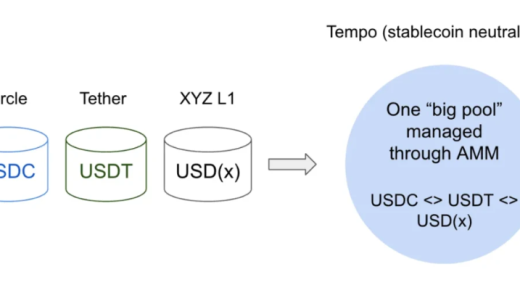
Positive Comments: The Strategy of E-commerce Platforms Competing for Supply Injecting New Impetus into the Upgrading of Industrial Belts and the Improvement of Platform Ecosystem
In the critical stage when the e-commerce industry is shifting from “incremental expansion” to “intensive cultivation of the existing market,” platforms such as Pinduoduo, Taobao, and Douyin have collectively turned their attention to the B-side supply side. In particular, the exploration of the “factory direct sales” model is essentially a value reconstruction centered around “high-quality supply.” This strategy not only conforms to the industry development trend but also has multiple positive impacts on the upgrading of industrial belts, the optimization of platform ecosystems, and the enhancement of merchants’ capabilities.
First of all, the screening and support of “factory direct sales” by platforms is a correction of the past “traffic-driven” model, which helps to solve the long-standing “short-sightedness” pain point in industrial belts. The case of the Jingxian rice paper industrial belt mentioned in the news is quite representative: In the past, due to the influx of a large number of traders chasing short-term trends through “large circulation + low profit margins,” industry hotspots were short-lived, ultimately leading to the bankruptcy of merchants and damage to the ecosystem. Pinduoduo sets quantitative thresholds such as annual sales and factory floor area and gives priority to introducing factories with production qualifications and design capabilities. In essence, it is screening supply entities with a “long-term perspective.” Such factories pay more attention to product R & D and quality stability, which can avoid the vicious cycle of traders relying too much on price wars due to lack of production capabilities. Data shows that after three years of replacement in the Jingxian rice paper industrial belt, almost all the leading merchants have production and design capabilities. This is the result of the two-way selection between the platform and the industrial belt – factories need the platform’s market insights and marketing resources, and the platform needs the product stability and differentiation capabilities of factories. This complementary relationship provides key support for the industrial belt to shift from “traffic dependence” to “product-driven.”
Secondly, “factory direct sales” provide full-link empowerment from “production to sales” for factories through resource inclination (such as blue-label certification, live-streaming support, and promotion weighting), effectively solving the “capability short – board” of industrial belt merchants. The core advantages of traditional industrial belt factories lie in production and cost control, but they are generally weak in marketing, traffic operation, and user insights. In Pinduoduo’s “factory direct sales” system, the front – end blue-label certification and the “trendy good prices” resource position directly increase the exposure of products; the back – end policies such as advertising red envelopes, a 12% transaction rebate, and even “commission – free live – streaming throughout the year” significantly reduce the cost of factories for live – streaming; the 60 – day support period of the “start – up period + challenge period” guides factories to gradually master live – streaming skills through step – by – step incentives. This model of “low – threshold start + continuous capability cultivation” essentially integrates the platform’s traffic operation capabilities with the factories’ production capabilities. For example, factories that could only maintain basic operations due to the lack of a live – streaming team can now set up a team at a low cost through platform subsidies, and even attract live – streaming talents from other platforms to work on both platforms, thus upgrading live – streaming from “covering expenses” to the “core growth engine.”
Finally, the competition among multiple platforms on the B – side objectively promotes the “omnichannel optimization” of industrial belt merchants, providing more diverse growth paths for high – quality supply. The differentiated strategies of Taobao’s “Quality Alliance,” JD.com’s Jingxi’s “underwriting model,” and Xiaohongshu’s “personalized content incubation” complement Pinduoduo’s “factory direct sales.” As mentioned in the news, a sports goods industrial belt merchant chose to simultaneously settle in Taogongchang and Jingxi to balance profits because Pinduoduo had large sales volumes but low profit margins; while trendy brand merchants transferred their main business to Xiaohongshu because its content – planting attribute was more suitable for their needs. This pattern of “platforms having different focuses and merchants choosing according to their needs” avoids the monopoly of supply by a single platform and also forces platforms to continuously optimize their support policies (such as Pinduoduo’s “New – quality Merchant Support Plan” and “Hundred – Billion/Trillion – Yuan Support Plan”). Ultimately, the factories with product strength benefit – they can choose the most suitable platform resources according to their own advantages (such as cost control, design ability, and content attributes) to achieve “maximum efficiency.”
Negative Comments: Hidden Concerns behind the Supply – side Competition, Need to Be Vigilant against the Risks of Ecosystem Imbalance and Capability Mismatch
Although the strategic direction of e – commerce platforms competing for supply conforms to industry logic, there are still multiple challenges in the specific implementation. If not handled properly, it may lead to problems such as ecosystem imbalance, resource waste, or an increase in merchants’ burdens.
Firstly, the screening criteria of platforms for “high – quality supply” may intensify the survival pressure of small and medium – sized merchants, resulting in an excessive “Matthew effect.” The quantitative indicators such as annual sales, factory floor area, and registered capital in Pinduoduo’s “factory direct sales” entry threshold can screen out factories of a certain scale, but they also exclude a large number of small, medium, and micro – factories (especially start – up or niche factories with unique features). These factories may have unique product innovation capabilities (such as niche handicrafts and regional specialty agricultural products), but they are forced to turn to other low – threshold platforms or withdraw from the mainstream e – commerce ecosystem due to their insufficient scale. In the long run, the supply pool of the platform may have the problem of being “large and comprehensive” but lacking “small and beautiful” elements, weakening the diversity of the ecosystem. For example, in the Jingxian rice paper industrial belt, in addition to the leading factories, there may be small workshops focusing on traditional craftsmanship. Their products have strong premium capabilities but limited production volumes. If they are excluded from “factory direct sales” because they cannot meet the “annual sales” threshold, they may lose the opportunity to expand their market through the platform.
Secondly, the “subsidy – driven” model of factory live – streaming may cover up the short – board of capabilities, and the long – term effect is questionable. Pinduoduo reduces the cost of factories for live – streaming through policies such as advertising red envelopes and transaction rebates. In the short term, it can indeed attract merchants to do live – streaming on multiple platforms or try live – streaming. However, the core competitiveness of live – streaming (such as content planning, user interaction, and conversion link design) cannot be solved only by subsidies. As mentioned in the news, a factory’s live – streaming team in an industrial belt only has three or five anchors, and they “don’t have high requirements for scale or quality,” which reflects that factories’ understanding of live – streaming still stays at the “basic operation” level. If the platform relies too much on subsidies and ignores the systematic training of factories’ live – streaming capabilities (such as user portrait analysis, live – streaming script design, and traffic reception strategies), factories may fall into the dilemma of “having traffic but no conversion” or “high input and low output.” In addition, although Pinduoduo’s pure live – streaming for product sales based on “efficient group – buying” meets the “high – burst” demand of white – label products in industrial belts, the low upper limit of the unit price may limit the profit margin of merchants. If factories cannot increase the unit price through live – streaming (such as launching customized products or combo packs) and only rely on “low – price and high – volume sales,” they will still fall into the cycle of “small profits but quick turnover” in the long run, which goes against the platform’s goal of “quality improvement.”
Thirdly, the competition among multiple platforms may increase the operation cost of merchants, leading to resource dispersion and a decrease in efficiency. As mentioned in the news, merchants in industrial belts generally operate on multiple channels and need to deal with the different rules of platforms such as Pinduoduo, Taogongchang, Jingxi, and Xiaohongshu (such as commission rates, traffic mechanisms, and content requirements) at the same time. For example, Pinduoduo focuses on “low – price hit products,” Taogongchang emphasizes “quality premium,” and Xiaohongshu requires “content planting.” Merchants need to adjust their product strategies, operation teams, and even supply chains for each platform, which is a big challenge for factories with limited resources. If there is a lack of coordination among the support policies of platforms (such as traffic interconnection and data sharing), merchants may be distracted by “fighting on multiple fronts,” resulting in a decrease in overall operation efficiency. A sports goods merchant mentioned that “they don’t know how long the high – growth of Pinduoduo can last,” which essentially reflects merchants’ concerns about the uncertainty of platform policies. If they rely too much on multi – platform operation, their performance may decline due to the traffic fluctuation or policy adjustment of a certain platform (such as the reduction of subsidies).
Suggestions for Entrepreneurs: Seize the Supply – side Opportunities and Respond to Platform Competition through “Capability Building”
Facing the industry trend of e – commerce platforms competing for supply, entrepreneurs in industrial belts (especially factory – type merchants) need to replace “passive selection” with “active adaptation.” Through capability building and strategy optimization, they can maximize their own value in platform competition. The following are specific suggestions:
Precisely Match Platform Resources and Clarify the Positioning of the Main Platform
Entrepreneurs need to choose the most suitable platform according to the characteristics of their products (such as unit price, category attributes, and content requirements). For example, white – label products with low prices and high frequency can be prioritized on Pinduoduo (using the traffic weighting and live – streaming support of “factory direct sales”); factory brands that focus on quality premium can focus on operating on Taogongchang (using the path of “Quality Alliance” to upgrade to Tmall brands); products with personalization and strong design sense (such as trendy brands and handicrafts) can use Xiaohongshu as the main platform (using the content resources of the “Treasure Merchant Incubation Center”). At the same time, they need to avoid blindly “expanding on all channels” and focus on in – depth operation on one or two core platforms to concentrate resources and improve operation efficiency.Take “Product Strength” as the Core and Strengthen Differentiated Advantages
The screening of “high – quality supply” by platforms is essentially the recognition of “long – term value.” Entrepreneurs need to break out of the “low – price involution” thinking and build differentiated competitiveness through product innovation (such as function upgrading, design optimization, and process improvement). For example, the leading factories in the Jingxian rice paper industrial belt have grasped long – term demand through “production + design” capabilities instead of chasing short – term trends, and this model is worth learning from. In addition, they can design “platform – exclusive products” in combination with platform resource positions (such as Pinduoduo’s “Trendy Good Prices”) to improve the matching degree with platform users and enhance user stickiness.Systematically Improve Live – streaming Capabilities and Shift from “Subsidy – Driven” to “Operation – Driven”
Regarding the platform’s live – streaming support policies, entrepreneurs need to take “low – cost live – streaming start” as the starting point rather than the end. It is recommended to set up a dedicated live – streaming team (or cooperate with a professional MCN) and systematically learn live – streaming operation skills (such as user hierarchical operation, live – streaming script design, and traffic reception and conversion). At the same time, they can use the “step – by – step rebate policy during the challenge period” provided by the platform to set phased goals (such as increasing the live – streaming duration and interaction rate) and gradually transition from “relying on subsidies” to “self – profitable.” In addition, they need to pay attention to the “content – oriented” trend of live – streaming and try to integrate product stories and production scenarios (such as showing the factory production process) to improve user trust and unit price.Pay Attention to the Policy Coordination of Multiple Platforms and Reduce Operation Costs
For entrepreneurs who need to operate on multiple platforms, it is recommended to establish a “middle – platform” operation system to uniformly manage the product library, user data, and supply chain to avoid duplicate investment. For example, synchronize the orders and inventory of each platform through the ERP system to reduce manual operation errors; use data analysis tools (such as the business advisors of each platform) to compare the user portraits and consumption habits of different platforms and adjust product strategies accordingly. In addition, they can pay attention to the “dual – platform incentive” policies between platforms (such as Pinduoduo’s “dual – platform operation” policy at the beginning of the year) to reduce the cross – platform operation cost through superimposed subsidies.Maintain Sensitivity to Industry Trends and Plan for Long – term Capabilities in Advance
The supply – side competition among e – commerce platforms is still evolving (such as Taogongchang’s “Quality Alliance” cultivating brands in stages and Xiaohongshu’s “personalized incubation”). Entrepreneurs need to pay attention to policies and industry trends and plan for the capabilities needed in the future in advance. For example, if they plan to upgrade to a Tmall brand through Taogongchang, they need to improve their brand VI design and user operation system in advance; if they focus on Pinduoduo’s live – streaming ecosystem, they need to strengthen their short – video content production capabilities (to drive traffic to live – streaming). At the same time, they need to be vigilant against the “platform – only theory” and always take user needs as the core to avoid losing the ability to acquire customers independently due to excessive reliance on platform resources.
In summary, the “B – side battle” of e – commerce platforms competing for supply is both a challenge and an opportunity for entrepreneurs in industrial belts to upgrade. Only by taking “product strength” as the foundation, “capability building” as the support, precisely matching platform resources, and maintaining strategic determination can they break through and achieve “long – term value” in this supply – side competition.
- Startup Commentary”Building LLMs: The Knowledge Graph Foundation Every AI Project Needs”
- Startup Commentary”The 17th Year of Tmall Double 11 and the New Map Rewritten by AI”
- Startup Commentary”How to Prepare Your Data for Artificial Intelligence”
- Startup Commentary”Small and Medium-sized Banks: “Cutting the Tail” in Loan Assistance”
- Startup Commentary”The Six AI Giants on Stage: AGI Is No Longer a “Future” Thing”





